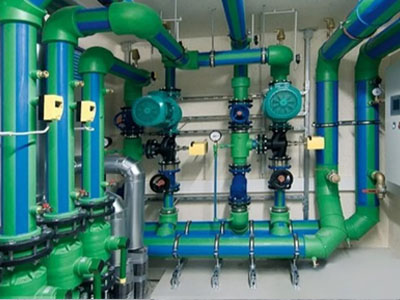

Our Range of Water Based Fire Protection System

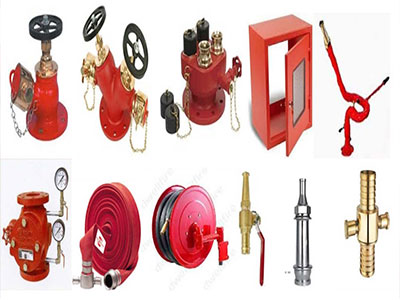
Hydrant Systems
-
A fire hydrant is an above-ground connection that provides access to a water supply for the purpose of fighting fires. Fire hydrant systems are an installation of pipes, water tanks, pumps, hydrant outlets and/ or hose reels.
We design hydrant system as per TAC, Indian, OISD and NFPA Standards/ guidelines. Almost all part of the premises shall be covered by such system.
Our designed system is not only complying the national and international norms/ guideline but also considered the exact requirement to minimize the cost at same time, increase the effectiveness of system for maximum gains.
Water Spray Systems
-
Water Spray System is a special fixed pipe system connected to a reliable source of pressurised water supply and equipped with water spray nozzles for application on area / equipment to be protected. The system can be operated automatically by connection to an automatic detection and alarm system or manually, or both.
Water spray systems are generally used for fire protection of flammable liquid and gas storage tanks, piping, pumping equipment, electrical equipment such as transformers, oil switches, rotating electrical machinery etc. and for protection of openings in fire walls and floors.
The piping system is connected to the water supply through an automatically actuated Deluge Valve, which initiates flow of water. Automatic actuation is achieved by operation of automatic detecting equipment installed along with water spray nozzles. There are two types of systems namely High Velocity and Medium Velocity systems.
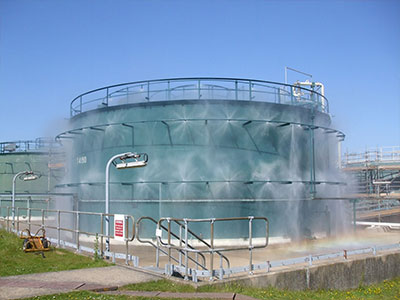
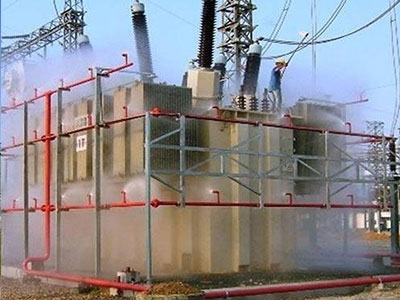
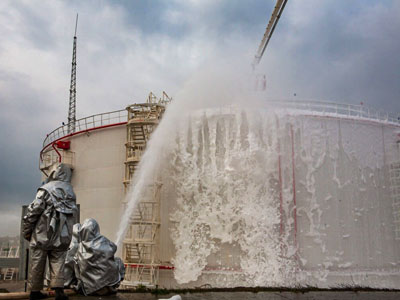
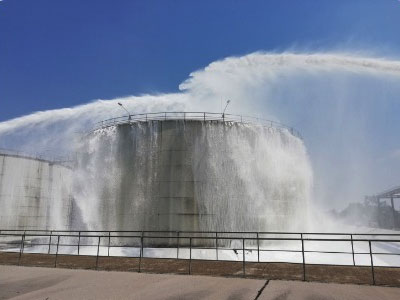
Foam Suppression Systems
-
Simply stated, firefighting foam is a stable mass of small, air-filled bubbles with a lower density than oil, gasoline, or water. Foam is made up of three ingredients: water, a foam concentrate, and air. Water is mixed with a foam concentrate (proportioned) to form a foam solution. This solution is then mixed with air (aspirated) to produce a foam which readily flows over fuel surfaces.
• Foam blankets the fuel surface, smothering the fire and separating the flames from the fuel surface.
• The water content of the foam cools the fuel.
• The foam blanket suppresses the release of flammable vapors that can mix with air.
Sprinkler Systems
-
In smaller workplaces, portable fire extinguishers will probably be sufficient to tackle small fires. However, in more complex buildings, or where it is necessary to protect the means of escape and/or the property or contents of the building, it may be necessary to consider a sprinkler system. Sprinkler systems are traditionally acknowledged as an efficient means of protecting buildings against extensive damage from fire. They are also now acknowledged as an effective means of reducing the risk to life from fire. Systems are being developed which may be suitable for use in workplaces with residential areas, such as care homes and houses in multiple occupancy. Sprinkler systems need to be specifically designed and installed to the appropriate hazard category in accordance with an approved code of practice.
We offer Design & Engineering of an integrated Sprinkler System with fine protection engineering standards Network of specially sized or hydraulically designed piping installed in building, structure generally overhead with attached sprinkler in a systematic pattern proper location of alarm valve and orientation as per our best design practice makes us leader in designing this system. We design sprinkler system as per TAC, Indian and NFPA Standards/ guideline.
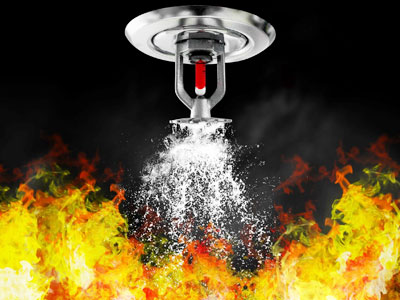
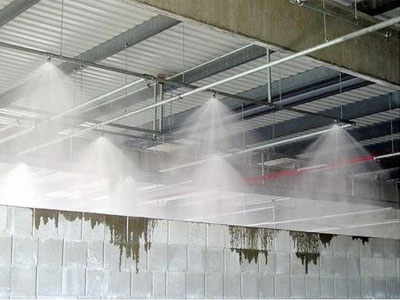

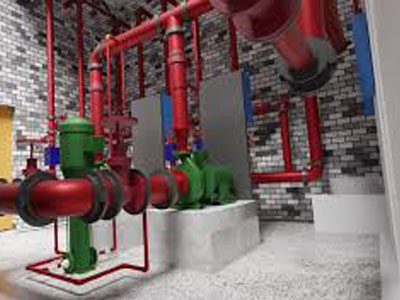
Industrial Piping
-
Industrial piping systems are the lifelines of many manufacturing and processing facilities, facilitating the transport of fluids, gases, and materials essential for production processes. These systems consist of interconnected pipes, fittings, valves, and other components designed to withstand high pressure, temperature, and corrosive environments. Industrial piping networks are engineered to meet specific requirements of different industries, including petrochemical, pharmaceutical, food processing, and power generation. Proper design, installation, and maintenance of industrial piping are crucial for ensuring operational efficiency, safety, and regulatory compliance. Additionally, advancements in materials and technology continue to drive innovation in industrial piping systems, improving performance, reliability, and sustainability across various sectors.
Electrical solutions
-
Electrical solutions encompass a broad range of products, services, and technologies aimed at addressing diverse needs related to power generation, distribution, and utilization. From residential to industrial applications, electrical solutions encompass everything from basic wiring and lighting installations to sophisticated control systems and renewable energy integration. These solutions often involve the design, installation, and maintenance of electrical infrastructure, including power grids, substations, circuitry, and electrical devices. With a focus on efficiency, reliability, and safety, modern electrical solutions also emphasize sustainability and resilience, leveraging innovations such as smart grids, energy storage systems, and renewable energy sources to meet evolving energy demands while minimizing environmental impact.

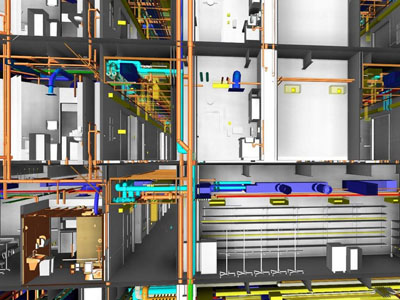

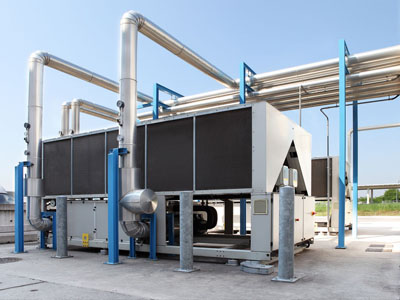
HVAC
-
Heating, ventilation, and air conditioning (HVAC) systems are essential for maintaining comfortable indoor environments year-round. HVAC systems regulate temperature, humidity, and air quality in residential, commercial, and industrial spaces. They work by circulating air through ducts and vents, where it undergoes heating or cooling processes before being distributed throughout the building. Properly designed and maintained HVAC systems not only enhance comfort but also contribute to energy efficiency and indoor air quality, promoting a healthier and more productive environment for occupants.
PHE/ Plumbing
-
Plumbing and public health engineering (PHE) systems play a crucial role in ensuring the safe and efficient distribution of water and the disposal of waste in buildings and communities. These systems encompass a network of pipes, fixtures, valves, and fittings designed to deliver clean water for drinking, cooking, bathing, and sanitation purposes while managing wastewater effectively. Properly designed plumbing and PHE systems not only promote hygiene and convenience but also help prevent the spread of waterborne diseases and protect the environment by facilitating the safe disposal and treatment of sewage and wastewater. Regular maintenance and adherence to plumbing codes and standards are essential for ensuring the reliability and longevity of these vital systems.

